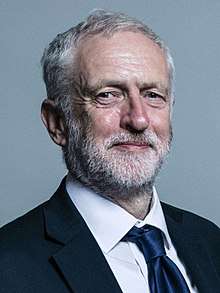London Assembly election, 2020
| ||||||||||||||||||||||||||||||||||||||||
25 London Assembly Seats 13 seats needed for majority | ||||||||||||||||||||||||||||||||||||||||
|---|---|---|---|---|---|---|---|---|---|---|---|---|---|---|---|---|---|---|---|---|---|---|---|---|---|---|---|---|---|---|---|---|---|---|---|---|---|---|---|---|
| ||||||||||||||||||||||||||||||||||||||||
.svg.png) London Assembly constituencies | ||||||||||||||||||||||||||||||||||||||||
The next election to the London Assembly is due to be held on Thursday 7 May 2020.[1]
Background
In the 2016 London elections, the Labour Party won the post of London Mayor, as well as 12 seats in the London Assembly elections. The party polled over 1 million votes, which represented the best-ever result for any political party in a London Assembly election. The Conservative Party were the runners-up, winning 8 seats, followed by the Green Party (2 seats), the UK Independence Party (2 seats) and the Liberal Democrats (1 seat). The Women's Equality Party, meanwhile, achieved 3.5% of the regional list vote, failing to reach the 5% minimum threshold required for representation.
The following year, in the snap election on 8 June 2017, Labour polled 55% of the popular vote in London, winning 49 of 73 London seats in the British House of Commons. In the 2018 borough elections across the capital, Labour saw their best result in over 45 years, winning 47% of the vote.
Electoral system
The election system used is called the Additional Member System. There are 14 constituencies that elect one member each to the Assembly. These seats have previously only ever been won by the Labour Party or the Conservative Party. The remaining 11 seats are distributed by a second vote, by a modified D'Hondt method of closed-list voting, with a 5% minimum threshold. These seats have been won by other parties too. The overall result is a compromise between constituency representation and London-wide proportional representation.
Marginal Seats
The following lists are based on the 2016 results and may not be the actual seats targeted in a campaign.
Labour Targets
| Rank | Constituency | Winning party 2016 | Swing to gain | Labour's place 2016 | Result | |
|---|---|---|---|---|---|---|
| 1 | Havering and Redbridge | Conservative | 0.4 | 2nd | ||
| 2 | Croydon and Sutton | Conservative | 3.2 | 2nd | ||
| 3 | West Central | Conservative | 4.75 | 2nd | ||
| 4 | South West | Conservative | 5.02 | 2nd | ||
Conservative Targets
| Rank | Constituency | Winning party 2016 | Swing to gain | Conservative's place 2016 | Result | |
|---|---|---|---|---|---|---|
| 1 | Merton and Wandsworth | Labour | 1.15 | 2nd | ||
| 2 | Ealing and Hillingdon | Labour | 3.95 | 2nd | ||
| 3 | Barnet and Camden | Labour | 4.35 | 2nd | ||
| 4 | Brent and Harrow | Labour | 5.95 | 2nd | ||
Green Targets
| Rank | Constituency | Winning party 2016 | Swing to gain | Green's place 2016 | Result | |
|---|---|---|---|---|---|---|
| 1 | Merton and Wandsworth | Labour | 16.9 | 3rd | ||
| 2 | West Central | Conservative | 17.5 | 3rd | ||
| 3 | Ealing and Hillingdon | Labour | 17.5 | 4th | ||
| 4 | Lambeth and Southwark | Labour | 18.9 | 3rd | ||
UKIP Targets
| Rank | Constituency | Winning party 2016 | Swing to gain | UKIP's place 2016 | Result | |
|---|---|---|---|---|---|---|
| 1 | Havering and Redbridge | Conservative | 11 | 3rd | ||
| 2 | Croydon and Sutton | Conservative | 14.25 | 4th | ||
| 3 | Bexley and Bromley | Conservative | 15 | 3rd | ||
Liberal Democrat Targets
| Rank | Constituency | Winning party 2016 | Swing to gain | Lib Dem's place 2016 | Result | |
|---|---|---|---|---|---|---|
| 1 | South West | Conservative | 12.57 | 3rd | ||
| 2 | Croydon and Sutton | Conservative | 14.1 | 3rd | ||
See also
References
- ↑ "Electing the Mayor and Assembly". London City Hall.



.jpg)
.jpg)